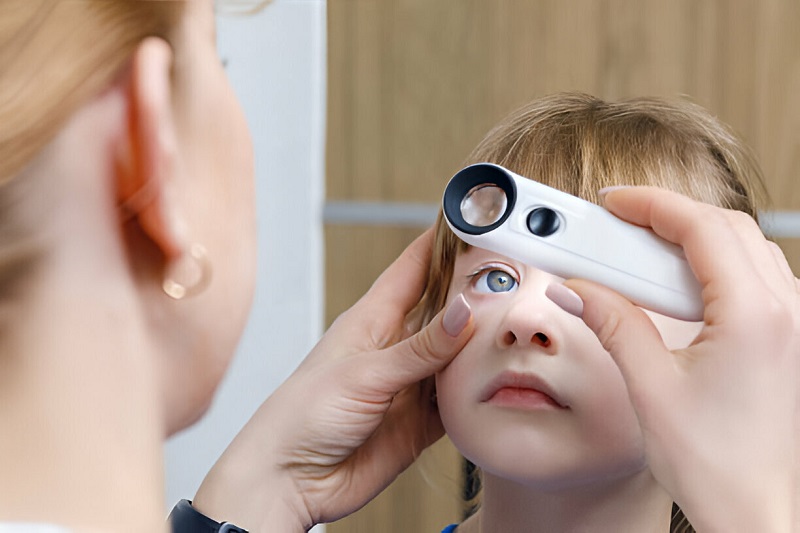Astigmatism is a standard refractive error and a significant cause of visual impairment. The generality of Astigmatism at birth decreases throughout infancy and during the academic years; prospective studies have reported that the astigmatic profile does not change substantially. A study supported by the National Institutes of Health revealed that about 23% of infants from 6 months to 1 year old have symptoms of Astigmatism, but many children grow out of it as they grow up.
The most common indicator for a child with astigmatism vision is educational challenges and delays with no specific reasoning. The child may come across as oblivious or at times hyperactive. Although, this lack of concentration roots from the inability to focus on the letters of the books or blackboards.
Through this article, you may learn how to detect Astigmatism in children at the earliest.
What does Astigmatism mean?
Astigmatism is a usual condition that causes blurry vision. Typically, the cornea, the transparent outer layer of the eye, is dome-shaped. But with Astigmatism, the cornea is more like a complete sphere. This way changes the way light enters the eye and makes objects both far and near appear fuzzy or blurry.
How common is Astigmatism in children?
Astigmatism is a prevalent condition in infants, but many children grow out of it at one year old. Children with hyperopia and myopia are more likely to have Astigmatism.
Causes of Astigmatism in children
Astigmatism is a birth condition caused by an atypical cornea curve that shifts the way light enters the eye and goes to the retina. The retina is a light-sensitive area at the back of the eye that converts light into signals for the brain. In a healthy look, light reaches the retina as a single focal point. With Astigmatism, the retina receives light in multiple focal points, causing objects up close and at a distance to appear blurry. Other potential causes are damage to the cornea or eye ailments that may damage the eyelid and the cornea.
Types of Astigmatism
Astigmatism in children may be of several types, depending on related to any other refractive flaws. The first type is myopic Astigmatism, where one or both of the meridians focus like an eye with nearsightedness. Similarly, Astigmatism in children can also be hyperopic, where the eye poorly focuses on close distances. In a few cases, Astigmatism can be mixed, combining challenges of both types.
Symptoms
Some of the symptoms that indicate your child has astigmatism include:
- Regular complaints of headaches
- Constant eye strain, especially after reading
- Blurred, fuzzy or distorted vision
- Squinting or persistently closing eyes
- Tilting the head or turning to see better
- Shutting an eye to see things better or read
- Shielding eyes or other signs of sensitivity to light
Testing for Astigmatism in children
To diagnose Astigmatism, along with observing symptoms, you should take your child to the ophthalmologist. A professional view of your child’s eye health will determine the line of treatment. Children rarely complain about their sight, which makes regular checks even more important, especially for deciding conditions such as Astigmatism, where it’s hard to notice the symptoms. Children with undiagnosed Astigmatism may struggle in school, which teachers or parents could wrongly interpret as a sign of a learning disability.
Treatments
Astigmatism can be corrected with prescribed eyeglasses or contact lenses, albeit these may not be necessary before children begin grade school. A few children only have a slight level of Astigmatism, and no far-sightedness or nearsightedness may not require lenses.
Astigmatism is exceptionally normal, with research indicating that many children are born with some degree of it. Thus, regular eye tests are highly essential for your children’s eye health.
Author Bio:
Aaron Barriga is the online marketing manager for Insight Vision Center. With a knack for understanding medical procedures, and an interest in eye and vision health, Aaron loves to share what he knows and what he learns. He blogs to inform readers about the latest eye care technology and other topics related to eye care, especially LASIK. Aaron loves collecting coasters from the different bars and restaurants he visits during his travels.
